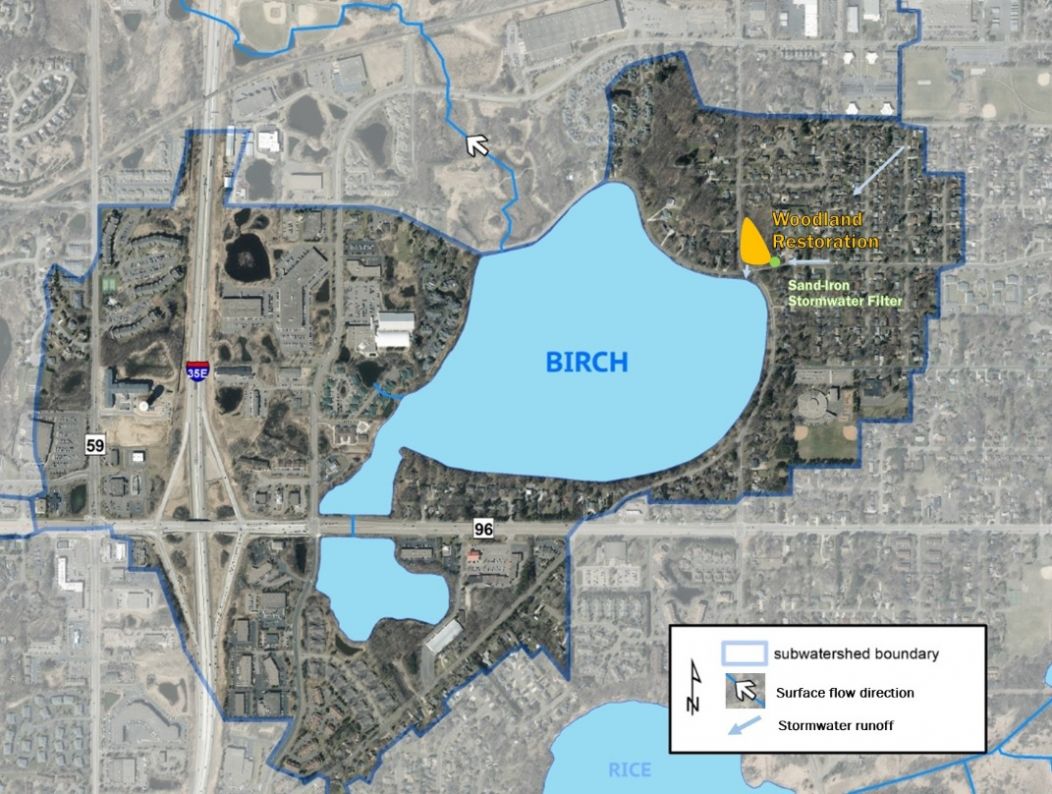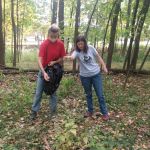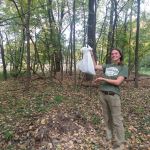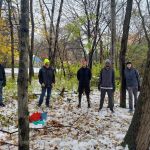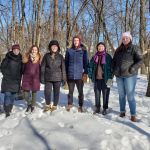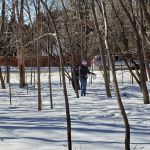4th and Otter Woodland Restoration
Quick Facts:
- Project is a partnership between the VLAWMO and the City of White Bear Lake.
- Project is adjacent to the Birch Lake Sand-Iron Stormwater Filter and a wetland that drains into Birch Lake.
- Invasive species removal began with cutting and treating buckthorn in 2019 and was followed by high-intensity efforts to remove garlic mustard and Japanese hedge parsley that covered the site following buckthorn removal.
- University of Minnesota (UMN) Community-Engaged Learners, volunteers, and sentence-to-serve crews have helped with invasive plant removal, seeding, and planting.
- White Bear Lake Public Works has helped with restoration by removing piled buckthorn
- A focus of the project Is enhancement of native woodland species for a healthy plant community that promotes long-term iron-enhanced sand filter function at the site.
- Restoration area of 1.34 acres.
Funding:
Funding was supported by a Conservation Partners Legacy (CPL) Grant from the Minnesota DNR in 2020 for restoration/reseeding and in 2022 for enhancement of the ongoing restoration (Link to CPL)
Reason for the Project:
The project supports a key drainage area that treats stormwater before it drains into Birch Lake. Birch Lake is one of the cleanest lakes in the VLAWMO watershed and is an example of a shallow lake in a clean-water state that is surrounded by residential development.
Many wetlands in urban areas have been reduced to small, disconnected patches with limited healthy function. These wetlands receive more water, sediment, and nutrients than they would have historically because of increased pavement and other impervious surfaces. This particular wetland receives stormwater runoff from the nearby neighborhood, which covers a 640-acre drainage area. This restoration project is one of many tools used to reduce pressure on remaining natural areas and maintain effective stormwater treatment for Birch Lake.
The 4th Street and Otter Lake Road site includes a sand-iron stormwater filter (link). Prior to filter construction, invasive buckthorn dominated the site. This was a problem for the filter because of the high amounts of leaf litter that would accumulate and plug the filter. Removal of buckthorn helped to reduce the amount of leaf litter. A native, healthy plant community was needed to support long-term optimal filter function, avoid filter clogging, and prevent reestablishment of invasive species. With buckthorn and other invasive species removed, the site now contains a mostly closed-canopy area of maple, basswood, and cottonwood trees. Understory woodland species that would have historically been found at the site were selected for restoration and enhancement.
Implementation:
UMN Community-Engaged Learners, VLAWMO volunteers, White Bear Public Works, sentence-to-serve crews, and VLAWMO staff worked to remove buckthorn from 2019-2021. Monitoring and removal is ongoing. UMN Community-Engaged Learners conducted winter seed dispersal in 2020 to support existing native plant species and reestablish native plants that would have historically been found at the site. Bare-root plants, plugs, and larger potted plants were added in 2022. Native woodland plants were selected for the interior area of the site.
VLAWMO staff continue to visit the site, remove invasive species, and report activities in EDDMapS. EDDMapS is an important, centralized online tool for reporting invasive species infestations and removal efforts. Site maintenance will continue into the future to protect and support this restoration.
Native woodland plants used in the restoration include but are not limited to:
|
Wild Ginger |
Wild Geranium |
|
Wild Leek |
Large-flowered Bellwort |
|
Columbine |
Jacob’s Ladder |
|
Jack-in-the-Pulpit |
Solomon’s Seal |
|
Hairy Wood Mint |
Early Meadow Rue |
|
American Bellflower |
Bloodroot |
|
Dutchman’s Breeches |
Virginia Bluebells |
|
Big-leaved Aster |
Grasses: Common Bur Sedge, Long-beaked Sedge, Wood Reed Grass, Bottlebrush Grass, Fowl Manna Grass, and others |
Results:
- Increased longevity and safeguarding of the nearby iron-enhanced sand filter, which helps to protect water quality in Birch Lake.
- Improved habitat for pollinators, amphibians, migrant and resident birds, and more.
- The improved root systems of the native plants support soil health, which makes the area more resilient to fluctuating weather conditions due to climate change and natural climate variation.

